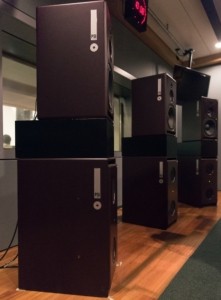Studio Monitors – Overview
Choosing the right studio monitor is crucial for any audio production. It ensures accurate sound reproduction, allowing you to hear every detail in your mix. This precision is essential for making informed decisions, resulting in a polished and professional final product.
Introduction to Studio Monitors
What are Studio Monitors?
Studio monitors are specialized loudspeakers designed for professional audio production, such as recording, mixing, and mastering music or other audio content. Unlike regular consumer speakers, which often enhance or color the sound to make it more pleasing to the listener, studio monitors are engineered to provide an accurate and uncolored representation of the audio.
Why Are They Important?
For any serious music producer, sound engineer, or content creator, studio monitors are essential for mixing and mastering tracks accurately. They help you identify and correct issues in your mix that regular speakers might mask and not reveal.
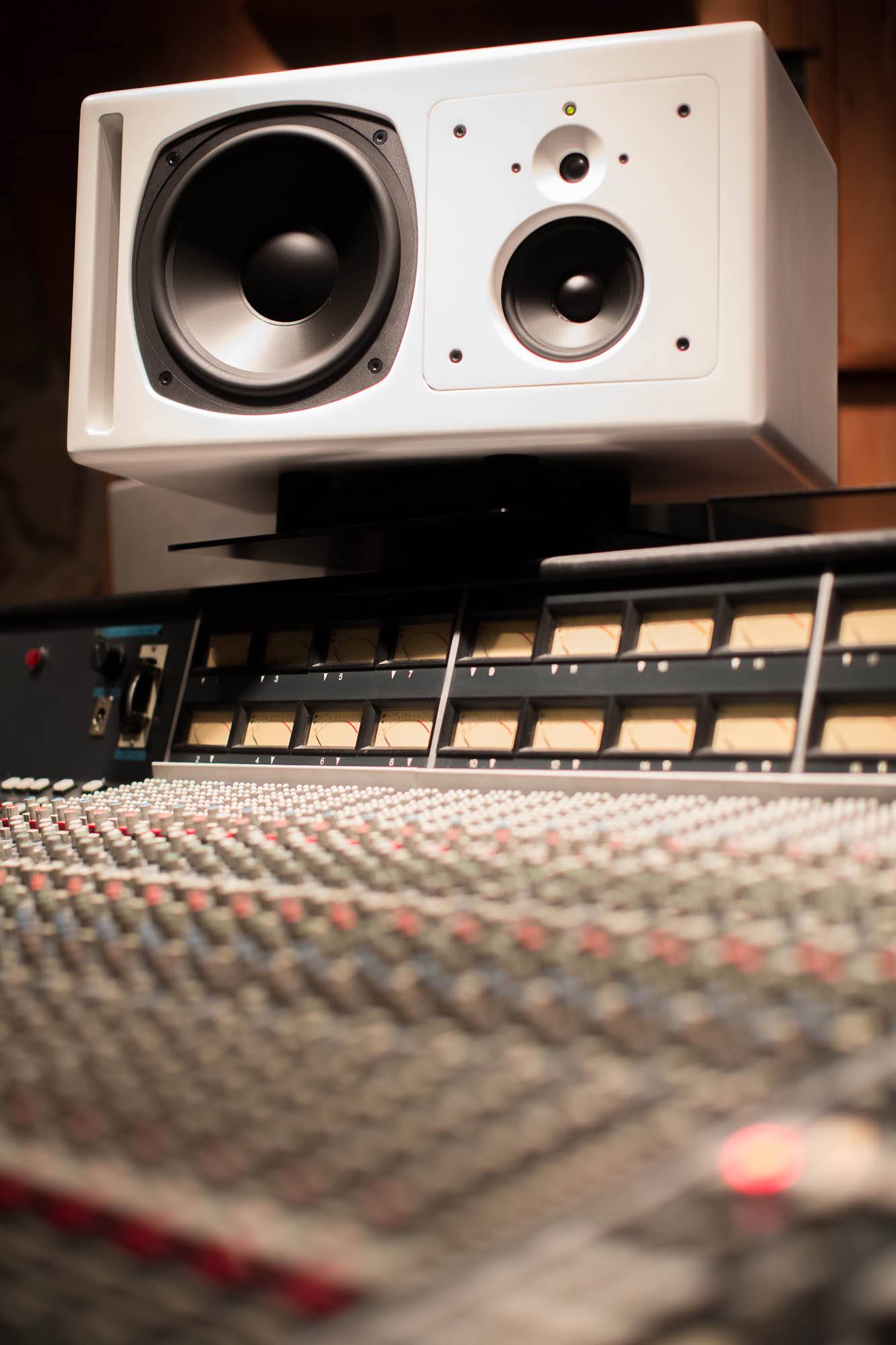
What is a good Studio Monitor?
Accurate Sound Reproduction
A good studio monitor accurately reproduces the sound without adding any coloration.
– Flat frequency response.
– Minimal distortion.
– Tight, controlled bass.
Build Quality and Durability
High-quality materials and construction are signs of a good monitor.
– Solid, well-built cabinets to minimize vibrations.
– Reliable components that can withstand prolonged use.
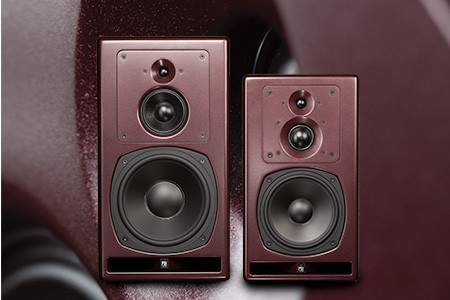
How to Choose the Right Studio Monitors?
Room Size and Acoustics
The size of your room and its acoustic properties significantly affect how studio monitors perform.
– For small rooms, consider smaller monitors (4-6.5 inches / 10-15 cm).
– For medium-sized rooms, studio monitors with 5-inch to 7-inch / 12-17 cm woofers are generally recommended.
– Large rooms might require larger monitors (8 inches / 20 cm or more) for better bass response.
– Consider acoustic treatment (or our active bass trap, the AVAA C214 for example) to minimize reflections and improve accuracy.
Listening Distance
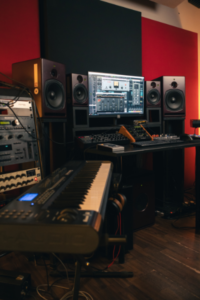 Description: Designed to be placed close to the listener, typically 2 to 4 feet (0.6 to 1.2 meters) away.
Description: Designed to be placed close to the listener, typically 2 to 4 feet (0.6 to 1.2 meters) away.
Best For: Small to medium-sized rooms or home studios where the listener sits close to the monitors.
Advantages:
– Provides a direct sound with minimal influence from room acoustics.
– Ideal for critical listening, mixing, and mastering, as they reduce reflections and interference from the room.
Models: A14-M Studio, A14-M Broadcast, A17-M.
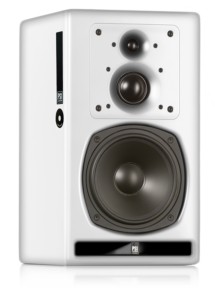 Description: Designed for a slightly larger listening distance, typically 4 to 8 feet (1.2 to 2.4 meters).
Description: Designed for a slightly larger listening distance, typically 4 to 8 feet (1.2 to 2.4 meters).
Best For: Medium-sized studios where the listener is seated a bit farther from the monitors.
Advantages:
-Offers a balanced sound with more extended bass response compared to nearfield monitors.
– Suitable for larger project studios with more space.
Description: Designed for listening distances greater than 8 feet (2.4 meters).
Best For: Large, professionally treated studio environments.
Advantages:
– Provides a powerful, full-range sound with deep bass extension.
– Suitable for mastering studios or large control rooms where accurate sound at a distance is required.
Models: A25-M, A25-M with Subwoofer A225-M
The advantages of PSI Audio Active Studio Monitors
At PSI Audio, every component – amplifier, driver, and cabinet – is carefully designed and engineered to work together in complete synergy.
We don’t use standard, off-the-shelf parts; instead, we develop and handcraft each element to ensure seamless integration, resulting in unparalleled sound quality and precision.
Here are the key advantages of PSI Audio Studio Monitors:
1. Precision and Accuracy
- Flat Frequency Response: PSI Audio monitors are known for their extremely flat frequency response, ensuring that what you hear is an accurate representation of the source material. This accuracy is crucial for mixing and mastering, where even the smallest details matter.
- Phase Compensation Technology (CPR): PSI Audio’s CPR (Compensated Phase Response) technology ensures that all frequencies are time-aligned, which means the monitors deliver coherent sound without phase distortion. This results in a precise stereo image and better depth perception.
2. Innovative Technology
- Adaptive Output Impedance (AOI): This feature adjusts the amplifier’s impedance to match the driver’s needs, improving efficiency and reducing heat, which prolongs the lifespan of the monitors.
- Low-Resonance Cabinet Design: PSI Audio monitors feature cabinets designed to minimize unwanted resonances, ensuring the sound is not colored by vibrations or cabinet reflections.
3. Handcrafted Build Quality
- Swiss Engineering: Each PSI Audio monitor is handcrafted in Switzerland with meticulous attention to detail. The craftsmanship and quality control processes ensure that every unit performs to the highest standards.
- Durability: The high-quality components and robust construction mean that PSI Audio monitors are built to last, even in demanding professional environments.
Perfectly matched: Each PSI Audio studio monitor is individually tested and calibrated in our anechoic chamber. We don’t talk about matched pairs, we talk about matched series.
4. Excellent Transient Response
- Fast and Precise: PSI Audio monitors excel in transient response, meaning they can reproduce sudden sounds (like percussion) with great accuracy. This characteristic is vital for achieving clarity and detail in mixes.
5. Versatility and Flexibility
- Wide Product Range: PSI Audio offers a range of monitors suited to various studio sizes and applications, from small nearfield monitors to larger midfield models.
- Compatibility: PSI Audio monitors are designed to work well in different acoustic environments, making them suitable for various genres and mixing styles.
6. Low Listening Fatigue
- Natural Sound: The combination of flat frequency response, phase coherence, and low distortion means PSI Audio monitors produce a natural, fatigue-free listening experience. This is crucial for long mixing sessions where ear fatigue can be a problem.
7. Environmental Considerations
- Energy Efficiency: PSI Audio monitors are designed to be energy-efficient, consuming less power without compromising on performance. This makes them an environmentally friendly choice for studios looking to reduce their energy footprint:
– The wood used for the MDF in our cabinets comes from nearby forests.
– 95% of the added value of our products comes from within a radius of 20 km2.
– The electricity we use comes from renewable sources.

Studio monitors by model
Click on the speaker to access its detailed page.
Studio monitors by type
2-way Speakers
Subwoofers

